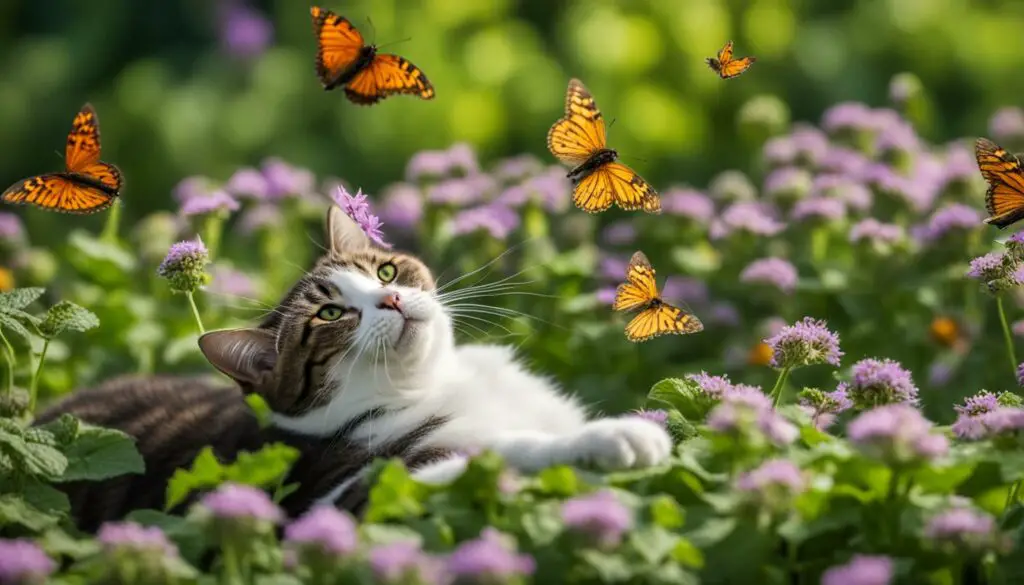Catnip, a natural herbal plant known scientifically as Nepeta cataria, has intrigued cat owners for years. Its effects on feline behavior have been a topic of interest, with many wondering if it truly has calming properties. In this article, we will delve into the intricacies of catnip and explore its potential to calm cats.
Catnip, also referred to as “catmint,” is a member of the mint family and is known for its powerful effects on cats. When exposed to catnip, some cats become highly stimulated, while others appear more relaxed. The key lies in understanding how catnip interacts with a cat’s behavior and why it elicits such diverse responses.
Key Takeaways:
- Catnip, or Nepeta cataria, is a natural herbal plant with intriguing effects on cat behavior.
- It can stimulate or relax cats, leading to a range of behavioral responses.
- Understanding the intricacies of catnip is essential for cat owners looking to utilize it as a calming tool.
- Some cats may show heightened playfulness, while others may exhibit increased interaction and curiosity in response to catnip.
- Patience and consistency are key when using catnip to achieve desired behavioral changes in cats.
Understanding Cat Behavior
Understanding cat behavior is crucial for cat owners to effectively address behavioral problems and create a harmonious environment for their feline friends. Cats have unique psychological and behavioral traits that shape their actions and reactions to various stimuli. By gaining insight into cat behavior, we can better comprehend why certain problems arise and how to tackle them.
Cat behavior can be influenced by a variety of factors, including their natural instincts, past experiences, and interactions with their environment. It is important to recognize common cat behavior problems such as inappropriate scratching, unwanted aggression, marking and spraying, and nocturnal antics. These behaviors can be manifestations of unmet needs or responses to specific triggers.
By observing and understanding their cat’s behavior, cat owners can identify the root causes of any issues and take appropriate steps to address them. This may involve providing environmental enrichment, implementing positive reinforcement techniques, or seeking professional guidance if necessary. Remember, every cat is unique, and a tailored approach is often necessary to effectively manage and modify their behavior.
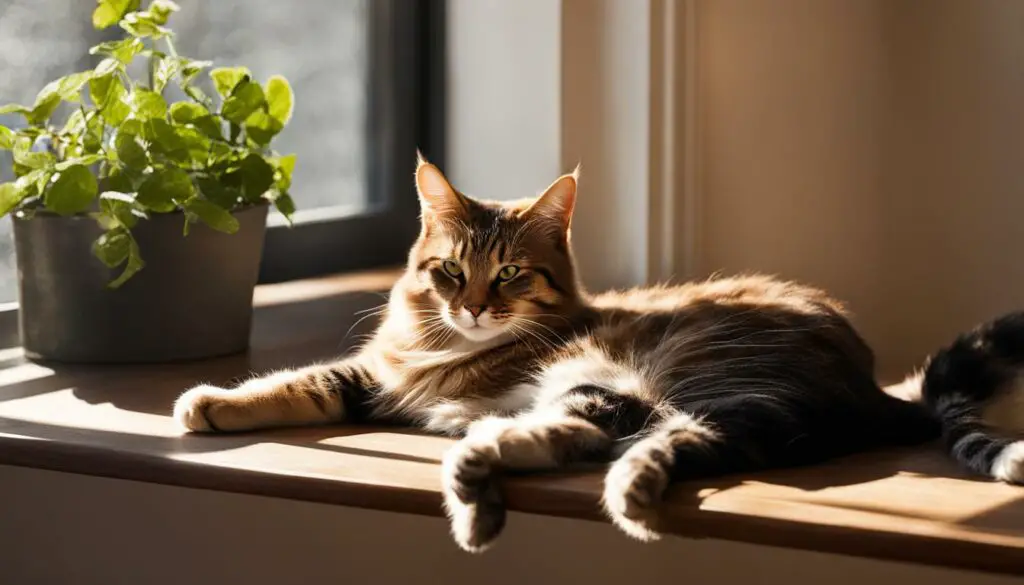
The Role of Cat Psychology
Understanding cat behavior goes hand in hand with delving into the fascinating field of cat psychology. Cats have their own set of instincts and behaviors that have evolved over thousands of years. Their solitary hunting instincts, territorial nature, and need for stimulation all play a role in shaping their behavior.
By learning about cat psychology, we can gain insights into why cats behave in certain ways and how we can meet their needs effectively. This knowledge allows us to create a cat-friendly environment that promotes their well-being and provides outlets for their natural behaviors, such as climbing, scratching, and hunting. Understanding cat psychology can help cat owners establish a deeper connection with their feline companions and enhance their overall quality of life.
The Science Behind Catnip
Catnip, also known as Nepeta cataria, contains a chemical compound called nepetalactone, which is responsible for its effects on cats. When cats sniff or chew on catnip leaves, the nepetalactone interacts with their olfactory sensory receptors, triggering a range of responses. Some cats may experience a sense of euphoria and playfulness, while others may become more sedated or relaxed. This chemical compound is what makes catnip so intriguing for our feline friends.
The Role of Nepetalactone
Nepetalactone is a psychoactive compound found in catnip that can have various effects on cats. It acts as a stimulant, triggering a burst of energy and playfulness in some cats. This can lead to increased activity levels and interactive play sessions. On the other hand, nepetalactone can also have a calming and relaxing effect on cats, promoting a sense of tranquility and reducing stress and anxiety. The response to catnip can vary from cat to cat, with some being more sensitive to its effects than others.
| Effects of Catnip | Description |
|---|---|
| Euphoria | Some cats experience a pleasurable, euphoric sensation when exposed to catnip. |
| Playfulness | Catnip can induce an increase in activity levels and play behavior in cats. |
| Relaxation | For other cats, catnip has a calming and relaxing effect, reducing stress and anxiety. |
“The effects of catnip on cats are fascinating. It’s amazing how a simple plant can have such a profound impact on their behavior.” – Veterinarian Dr. Emily Johnson
It’s important to note that the effects of catnip are temporary and typically last for only a short period of time, usually around 10 to 15 minutes. After that, cats may become temporarily immune to its effects for a certain period before being able to respond to catnip again. This is due to a sensory adaptation process. Catnip can be a great tool for environmental enrichment, providing mental and physical stimulation for cats. Whether it’s through interactive play or offering catnip-infused toys, cat owners can help enhance their feline companions’ well-being and behavior with the science behind catnip.
The Role of Volatile Organic Compounds
When it comes to the calming effects of catnip on feline behavior, the role of volatile organic compounds (VOCs) cannot be overlooked. Catnip contains volatile oils that are comprised of these VOCs, which include terpenes and terpenoids. These compounds are responsible for the distinct scent of catnip that cats find so enticing.
Terpenes are organic compounds found in many plants, including catnip, that contribute to their aroma. They play a crucial role in attracting cats to catnip and triggering their behavioral response. Terpenoids, on the other hand, are a modified form of terpenes and are also present in catnip. They contribute to the overall effects of catnip on cat behavior.
| Volatile Organic Compounds (VOCs) | Role in Catnip |
|---|---|
| Terpenes | Contribute to the aroma and attract cats to catnip |
| Terpenoids | Contribute to the overall effects of catnip on cat behavior |
The presence of these VOCs in catnip is what triggers the behavioral response in cats. When cats come into contact with catnip or sniff its scent, the VOCs interact with their olfactory sensory receptors, leading to a range of responses. Some cats may become more playful and active, while others may experience a sense of relaxation and calmness.
In summary, the volatile organic compounds found in catnip, including terpenes and terpenoids, play a crucial role in attracting cats to catnip and eliciting a behavioral response. These compounds contribute to the distinct scent of catnip and can have varying effects on cat behavior, ranging from increased playfulness to relaxation and calmness.
The Varied Responses to Catnip
Catnip has long been recognized as a powerful attractant for cats, and its effects on feline behavior can vary from one cat to another. While some cats may become more playful and active after exposure to catnip, others may exhibit heightened levels of interaction and curiosity. The scent of catnip acts as a natural attractant, drawing cats in and encouraging engagement with toys or other objects that contain the herb.
In a study conducted by feline behavior experts, it was observed that approximately 70% of cats show a positive response to catnip, while the remaining 30% appear to be unaffected by its presence. This variability in responses can be attributed to individual differences and genetic predispositions among cats. Some cats may have a higher sensitivity threshold and require stronger doses of catnip to elicit a response, while others may show a heightened sensitivity even to small amounts.
To better understand the varied responses to catnip, it is important to distinguish between its stimulating and relaxing effects. While some cats may experience an increase in playfulness and activity, others may show signs of relaxation and calmness. These behavioral changes can be beneficial in promoting environmental enrichment and encouraging interactive play sessions with catnip-infused toys.
| Catnip Response | Behavioral Effect |
|---|---|
| Increased playfulness | Cats may engage in more active and energetic play behaviors, such as chasing toys or play-fighting. |
| Heightened interaction | Cats may become more curious and interested in their surroundings, exploring new objects or seeking out social interaction. |
| No response | Some cats may show no behavioral changes or reactions to catnip, indicating a lack of sensitivity. |
Understanding the varied responses to catnip can help cat owners better tailor their interaction and playtime with their feline companions. It is important to note that while catnip can provide enjoyable experiences for cats, moderation is key. Excessive exposure to catnip can diminish its effects over time, so it is recommended to use it sparingly and provide alternative forms of stimulation and enrichment to keep cats engaged and entertained.
The Effects of Catnip on Cat Behavior
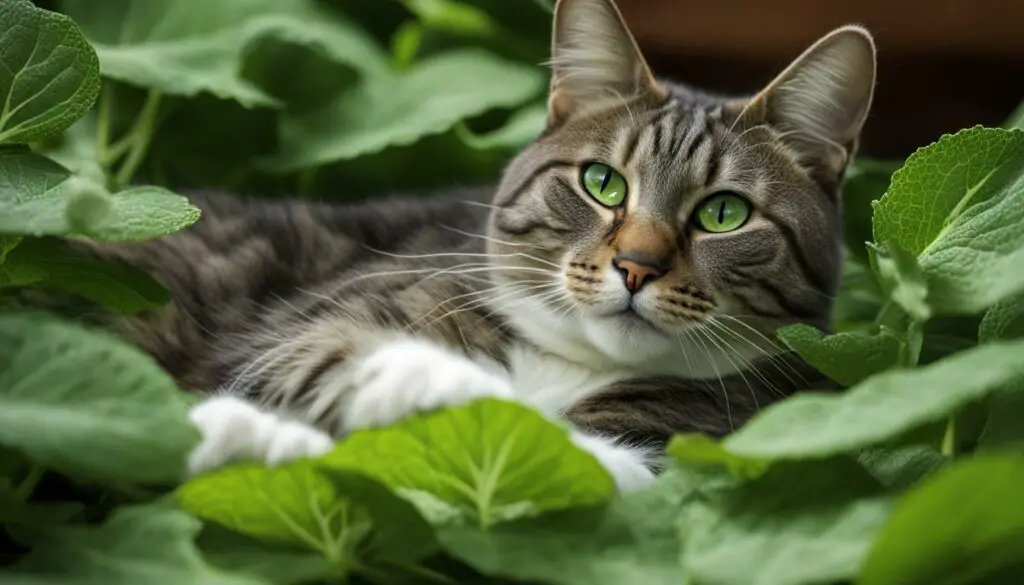
Catnip has long been known for its ability to both stimulate and relax cats, leading to a range of behavioral changes. The stimulation provided by catnip can result in increased activity and playfulness in cats. This can be beneficial for cats who may not be getting enough mental and physical stimulation in their daily lives. Interactive play with catnip-infused toys can provide an outlet for their energy and help prevent boredom.
On the other hand, catnip also possesses calming properties that can induce a sense of relaxation in cats. This is particularly beneficial for cats who may be experiencing stress or anxiety. The soothing effects of catnip can help them feel more at ease and promote a sense of well-being. By incorporating catnip into their environment, such as through the use of catnip-filled toys or scratching posts, cat owners can provide their feline companions with environmental enrichment and promote a sense of calm.
It is important to note that the effects of catnip can vary from cat to cat. While some cats may be highly responsive to catnip and exhibit pronounced behavioral changes, others may have a more subdued reaction. Additionally, it is worth mentioning that the effects of catnip are temporary and typically last for about 10-15 minutes. After that, cats may become less interested in the herb until they have had time to “reset.”
| Stimulation | Relaxation | Behavioral Changes |
|---|---|---|
|
|
|
Using catnip to promote both stimulation and relaxation in cat behavior can be a helpful tool for cat owners. It allows cats to release their energy, engage in interactive play, and find moments of calmness and relaxation. However, it’s important to remember that individual cats may have different reactions to catnip, and patience and consistency are key when incorporating it into their routines.
The Benefits of Environmental Enrichment and Interactive Play
Environmental enrichment and interactive play are crucial for a cat’s overall well-being. By incorporating catnip into their environment, cat owners can provide an additional layer of stimulation for their feline companions. This can help prevent behavioral problems that may arise from boredom or lack of mental and physical activity.
Interactive play sessions with catnip-infused toys not only provide physical exercise but also stimulate a cat’s natural instincts, such as hunting and pouncing. These play sessions help channel their energy in a positive way and provide an outlet for their natural behaviors. Additionally, interactive play can strengthen the bond between cat and owner, enhancing their relationship and creating a more fulfilling and enriching environment.
Individual Variability in Catnip Sensitivity
When it comes to catnip sensitivity, cats can show a wide range of responses. Some cats may have a strong reaction to even the smallest amount of catnip, while others may require a higher dose to experience any effects. This variability in sensitivity is influenced by factors such as genetics and individual differences.
Cats have a genetic predisposition towards their response to catnip. Certain cats may have inherited a higher sensitivity threshold, meaning they require more catnip to elicit a response. On the other hand, some cats may have a lower sensitivity threshold and show a more pronounced reaction to even minimal amounts of catnip. This dose-dependent sensitivity is unique to each individual cat.
The reasons for this individual variability in catnip sensitivity are not fully understood. It could be attributed to a combination of factors, including genetic variations and different types of olfactory sensory receptors in cats’ noses. While some cats may be more sensitive to catnip due to their genetic makeup, others may simply have different preferences or tastes when it comes to herbs and plants.
| Catnip Sensitivity | Response |
|---|---|
| High sensitivity | Strong reaction to small amounts of catnip |
| Low sensitivity | Requires larger doses of catnip to elicit a response |
Understanding the individual variability in catnip sensitivity is important for cat owners and enthusiasts. It helps us recognize that not all cats will have the same response to catnip and that some cats may not respond to it at all. It also reminds us that cats are unique individuals with their own preferences and behaviors.
As cat owners, it’s fascinating to observe the different ways our feline friends interact with catnip. Whether your cat is highly sensitive or requires a larger dose, providing them with the opportunity to explore and engage with catnip can be a source of enrichment and entertainment.
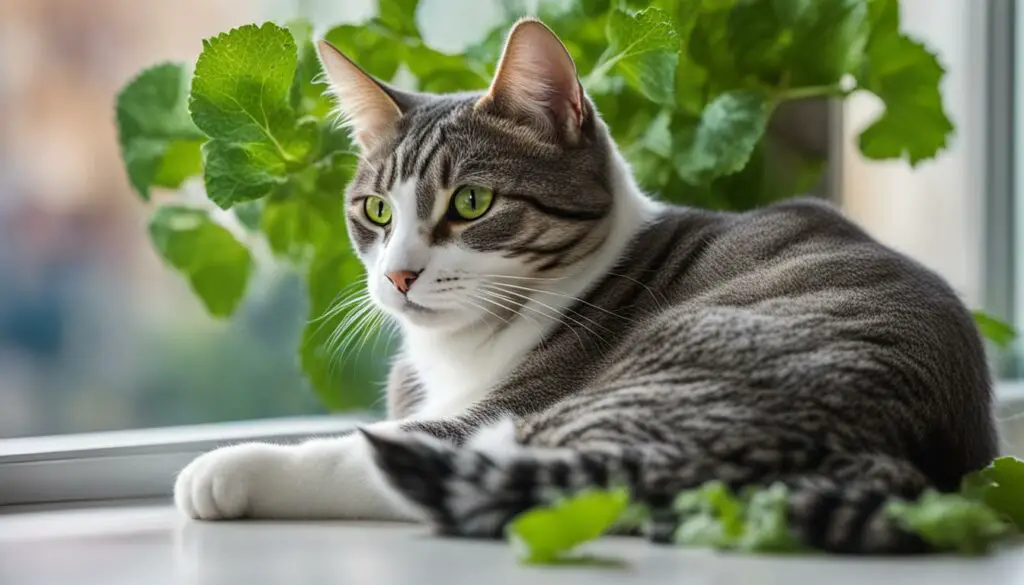
“Cats have their own unique preferences when it comes to catnip, just like humans have different tastes in food and smells.” – Feline Behavior Expert
Training and Catnip
Catnip can be a valuable tool in training cats, particularly when used in conjunction with positive reinforcement techniques. By associating desired behaviors with the scent or taste of catnip, we can motivate cats to repeat those behaviors in order to receive the pleasurable effects of the herb. This method is highly effective in encouraging desired behaviors and can also be used to discourage unwanted behaviors.
Positive reinforcement involves rewarding cats for exhibiting the behaviors we want to encourage. When a cat successfully performs a desired behavior, such as using a scratching post instead of furniture, we can offer them a small amount of catnip as a reward. This creates a positive association with the desired behavior and encourages the cat to continue engaging in it.
It’s important to note that training with catnip should always be done in a safe and controlled environment. It’s also crucial to use catnip in moderation, as cats can become desensitized to its effects if exposed to it too frequently. Additionally, not all cats respond to catnip in the same way, so it’s important to understand your individual cat’s preferences and sensitivities.
Overall, using catnip as a training tool can be a fun and effective way to reinforce positive behaviors in cats. By incorporating catnip into your training routine and utilizing positive reinforcement techniques, you can help your cat learn and comply with desired behaviors while strengthening the bond between you and your feline friend.
Benefits of Using Catnip in Training:
- Creates a positive association with desired behaviors
- Motivates cats to repeat those behaviors
- Encourages mental and physical stimulation during training sessions
- Strengthens the bond between cat and owner
- Provides an enjoyable reward for cats
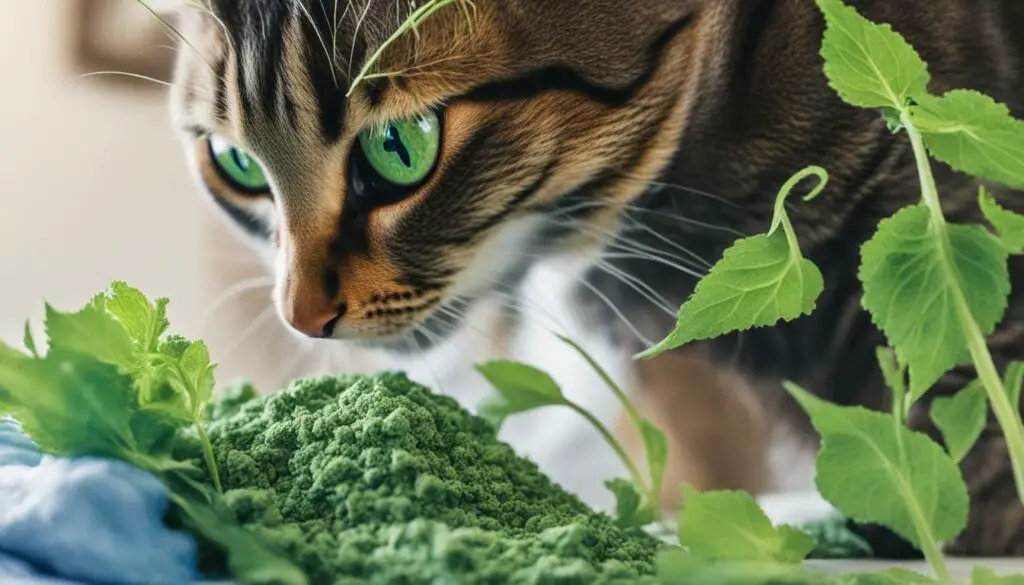
| Catnip Training Tips | Benefits |
|---|---|
| Associate catnip with desired behaviors | Creates a positive association with the behavior |
| Use catnip as a reward during training sessions | Motivates cats to repeat the desired behavior |
| Use catnip in moderation | Prevents desensitization to the effects of catnip |
| Observe your cat’s preferences and sensitivities | Understand how your cat responds to catnip |
Catnip and Cat Toys
Catnip can enhance the effectiveness of cat toys and other enrichment activities. Many cat toys are infused or coated with catnip to attract cats and maximize their engagement. Similarly, scratching posts can be treated with catnip to encourage cats to use them and redirect their scratching behavior. Interactive play sessions with catnip-infused toys can provide mental and physical stimulation for cats.
When it comes to cat toys, there are various options available that can provide entertainment, exercise, and mental stimulation for your feline friend. From interactive toys that encourage hunting behaviors to puzzle toys that challenge their problem-solving skills, the right toys can keep your cat engaged and happy.
The Benefits of Catnip-Infused Toys
By incorporating catnip into cat toys, you can enhance their appeal and make playtime even more enjoyable for your cat. The scent of catnip acts as a natural attractant, drawing cats towards the toys and encouraging them to engage in interactive play. This not only provides physical exercise but also stimulates their natural instincts, keeping them mentally stimulated as well.
Furthermore, catnip can also be used to redirect your cat’s attention away from destructive behavior such as scratching furniture. By offering catnip-infused scratching posts or toys, you can provide an appropriate outlet for their scratching needs while protecting your furniture.
| Benefits of Catnip-Infused Toys: | Examples of Cat Toys |
|---|---|
| – Attract cats to engage in play | – Interactive toys with moving parts |
| – Stimulate natural hunting behaviors | – Feather wands or fishing rod toys |
| – Provide mental and physical stimulation | – Puzzle toys that dispense treats |
| – Redirect scratching behavior | – Catnip-infused scratching posts or pads |
When choosing cat toys, it’s important to consider your cat’s preferences and play style. Some cats may be more attracted to toys that mimic the movements of prey, while others may enjoy toys they can bat around and chase. It can be helpful to provide a variety of toys to keep your cat engaged and prevent boredom.
Remember, always supervise your cat during playtime and regularly inspect toys for any signs of wear or damage. Replace worn-out toys to ensure the safety of your cat and the longevity of their enjoyment.
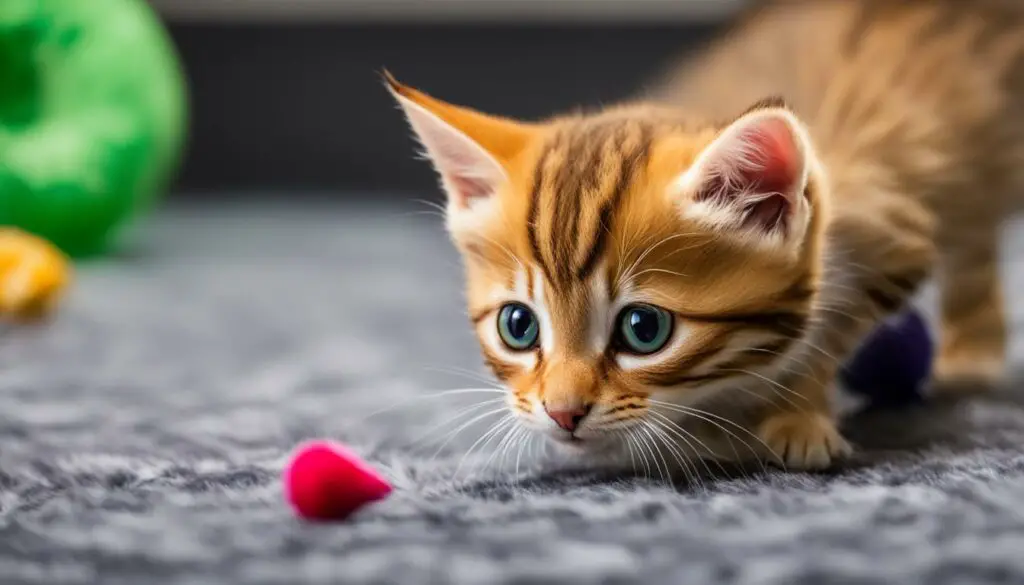
Catnip and Cat Health
Catnip has been known to have physiological and psychological effects on cats, making it a mood-altering herb. While it is not considered psychoactive in the same sense as drugs that alter human consciousness, catnip can induce changes in a cat’s behavior and mood. The effects of catnip can vary from cat to cat, with some displaying increased playfulness and others becoming more relaxed and calm.
The physiological effects of catnip on cats are attributed to the chemical compound nepetalactone, which interacts with the olfactory sensory receptors in their noses. This interaction triggers a range of responses, including euphoria, stimulation, and relaxation. Catnip’s mood-altering properties make it a valuable tool for environmental enrichment and stress reduction in cats.
It is important to note that catnip is generally safe for cats and does not have any known negative health effects. However, as with any herb or substance, individual cats may have different sensitivities. It is recommended to observe your cat’s response to catnip and use it in moderation, especially if your cat shows excessive excitement or agitation. If you have any concerns about your cat’s health or behavior, consult with a veterinarian for guidance and advice.
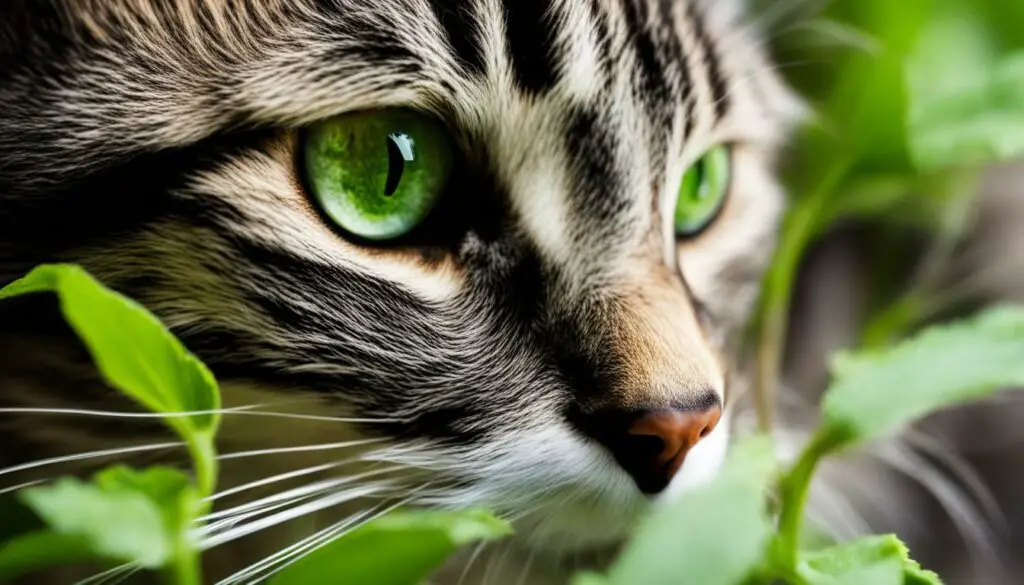
Table: Common Physiological and Psychological Responses to Catnip
| Response | Description |
|---|---|
| Euphoria | Catnip can induce a sense of bliss and happiness in cats. |
| Stimulation | Catnip can increase a cat’s activity level and playfulness. |
| Relaxation | Some cats may experience a state of calmness and relaxation when exposed to catnip. |
| Environmental Enrichment | Adding catnip to a cat’s environment can provide mental and physical stimulation, promoting overall well-being. |
| Stress Reduction | Catnip’s calming effects can help relieve stress and anxiety in cats. |
Catnip and Cat Behavior Myths
When it comes to cat behavior and the use of catnip, there are several myths and misconceptions that often circulate. Let’s debunk some of these common misunderstandings:
Myth 1: Cats Cannot Be Trained
Contrary to popular belief, cats can indeed be trained. While they may have a different approach to learning compared to dogs, they are highly intelligent creatures capable of understanding and responding to positive reinforcement techniques. By using rewards, such as treats or playtime with catnip-infused toys, you can successfully train your cat to exhibit desired behaviors.
Myth 2: Punishment is the Best Way to Discipline Cats
Punishment is not an effective or humane way to discipline cats. Cats do not respond well to negative reinforcement, and it can lead to fear, anxiety, and even aggression. Instead, focus on positive reinforcement, rewarding good behavior and redirecting unwanted behaviors. Using catnip as a reward can be a helpful tool in encouraging positive behavior and discouraging unwanted actions.
Myth 3: Cats Misbehave Out of Spite or with the Intention of Doing Wrong
Contrary to the common belief that cats misbehave out of spite or with malicious intent, cats generally exhibit certain behaviors due to unmet needs or natural instincts. They may scratch furniture to mark their territory or engage in play biting as a form of communication. Understanding and addressing these needs can help alleviate behavioral issues. Punishment is not an effective way to correct these behaviors.
It is important to approach catnip and cat behavior with accurate information and realistic expectations. By debunking these myths and understanding the true nature of cats and their response to catnip, you can better nurture a harmonious relationship with your feline companion.
Catnip and Cat Discipline Techniques
When it comes to disciplining cats, catnip can be a useful tool in promoting positive behavior. Positive reinforcement is a highly effective technique that involves rewarding desired behaviors with catnip. By associating the scent and taste of catnip with good behavior, cats can learn to repeat those behaviors in order to receive the pleasurable effects of the herb. This approach is gentle and humane, creating a positive and rewarding learning experience for your feline friend.
In addition to positive reinforcement, redirecting unwanted behavior is another effective strategy. If your cat engages in unwanted actions, such as scratching furniture or jumping onto countertops, you can redirect their attention to more appropriate outlets. Provide them with scratching posts or designated climbing areas, and encourage them to use these options by sprinkling catnip on them. By redirecting their behavior in a positive way, you can effectively discourage unwanted actions and promote healthier habits.
Ignoring unwanted actions can also be a useful disciplinary technique. Cats may sometimes engage in behaviors seeking attention, such as meowing excessively or knocking things off shelves. By ignoring these actions and not providing the attention they seek, you can discourage this behavior over time. However, it is important to ensure that your cat’s needs are being met and that they have appropriate outlets for their energy and stimulation.
Voice and noise can also be used as disciplinary tools when used in a controlled and appropriate manner. Cats are sensitive to sound, and certain noises can effectively deter them from engaging in unwanted behaviors. However, it is crucial to use this technique sparingly and avoid loud or aggressive sounds that may cause fear or stress in your cat. Always prioritize their well-being and emotional comfort when using voice and noise as a disciplinary measure.
The Spray Bottle Debate
The effectiveness of using a spray bottle as a disciplinary tool is a topic of debate among cat owners and trainers. Some believe that spraying a cat with water when they engage in unwanted behavior can be an effective deterrent, while others argue that it may cause fear or anxiety in cats. It is important to consider your cat’s individual temperament and response to such methods. If you choose to use a spray bottle, aim the water away from their face and focus on redirecting their behavior rather than using it as a punishment.
| Discipline Technique | Effectiveness | Considerations |
|---|---|---|
| Positive Reinforcement with Catnip | Highly effective in promoting desired behaviors. | Consistency is key for long-term success. |
| Redirecting Behavior | Effective in discouraging unwanted actions. | Provide appropriate outlets for their natural behaviors. |
| Ignoring Unwanted Actions | Can be useful for attention-seeking behaviors. | Ensure your cat’s needs are being met. |
| Voice and Noise | Can be used as a deterrent when used appropriately. | Avoid loud or aggressive sounds that may cause fear. |
| Spray Bottle | Debated effectiveness, individual response may vary. | Redirect behavior rather than using it as punishment. |
Remember, every cat is unique, and it may take time to find the most effective disciplinary techniques for your feline companion. Patience and consistency are key when working towards positive behavior changes. By incorporating catnip and implementing gentle discipline techniques, you can create a harmonious and enjoyable environment for both you and your beloved cat.
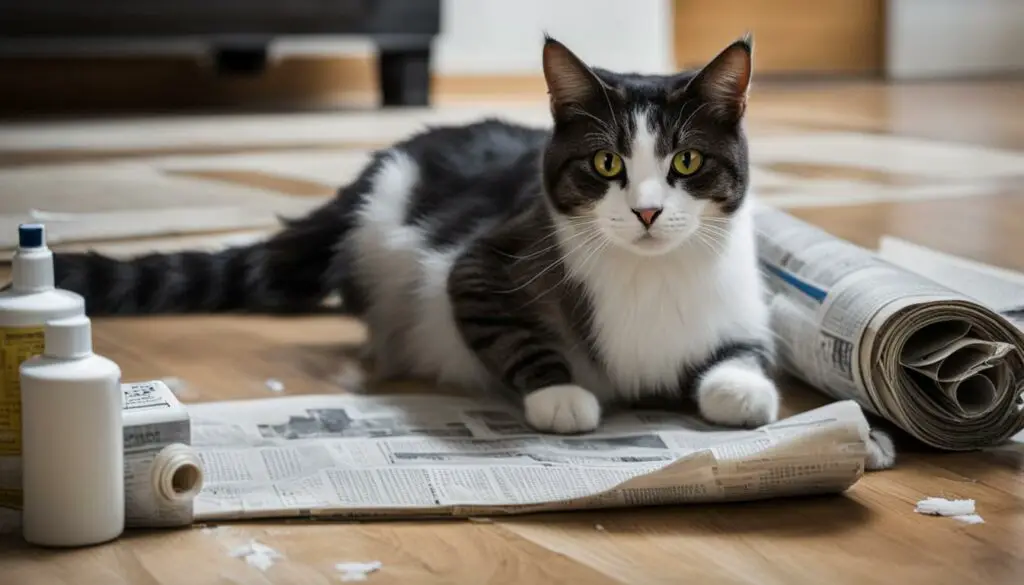
Catnip and Vet Considerations
When it comes to catnip and cat behavior, it’s important to consider the role of veterinary consultation. If your cat is exhibiting problematic behaviors, such as aggression, excessive scratching, or inappropriate elimination, seeking advice from a veterinarian can be beneficial. Vets have the expertise to assess your cat’s behavior and determine if there are any underlying medical conditions contributing to these issues.
In addition to behavior issues, your cat’s diet can also impact their behavior. Certain foods or dietary changes can influence a cat’s mood and overall behavior. It’s important to discuss your cat’s diet with your veterinarian to ensure they are receiving the proper nutrients and to rule out any potential dietary triggers for behavioral issues.
Veterinarians can provide guidance on behavioral modifications, environmental enrichment, and other interventions to address your cat’s behavior issues. They can also recommend strategies for incorporating catnip into your cat’s routine to promote mental stimulation and relaxation. With their knowledge and expertise, veterinarians can help you create a customized plan to address your cat’s specific needs.
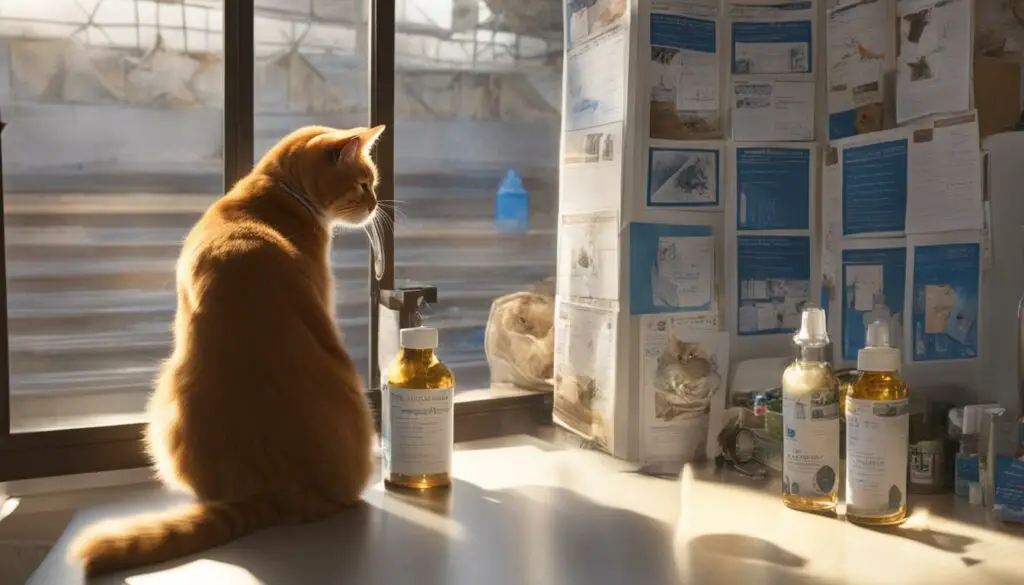
The Importance of Patience in Catnip and Cat Discipline
When it comes to working with catnip and implementing cat discipline techniques, patience is a virtue. Cats have their own learning curve and may require time to adapt to new behaviors and expectations. As cat owners, we must approach these processes with a consistent and patient mindset to achieve the desired results.
Patience is particularly crucial when using catnip as a tool for enrichment, training, and discipline. While some cats may immediately respond to catnip, others may take longer to show any noticeable changes in behavior. It’s important to remember that each cat is unique, and their sensitivity to catnip varies.
A consistent approach is also key to successful catnip and cat discipline. Cats thrive in a stable environment where expectations remain constant. By consistently reinforcing positive behaviors and redirecting unwanted actions, we can help our feline friends understand and comply with the behaviors we desire.
Understanding that patience and consistency go hand in hand allows us to navigate the challenges of working with catnip and implementing discipline techniques effectively. By providing our cats with the time and support they need to learn and adapt, we strengthen the bond we share with them and create a harmonious living environment.
| Benefits of Patience in Catnip and Cat Discipline | Ways to Cultivate Patience |
|---|---|
|
|
Conclusion
In conclusion, catnip is a natural herbal plant that can have calming effects on cats. Its intriguing effects on feline behavior, such as stimulation and relaxation, make it a valuable tool for cat owners. By understanding the intricacies of catnip and its influence on cat behavior, we can enhance our understanding of our feline friends and provide them with enriching experiences.
Catnip’s chemical compound, nepetalactone, interacts with cats’ olfactory sensory receptors, leading to a range of behavioral responses. This compound can induce a sense of euphoria and playfulness in some cats, while others may experience a more relaxed state. These effects make catnip beneficial for stress reduction and anxiety relief in cats.
Adding catnip to a cat’s environment can promote environmental enrichment and encourage interactive play. It can also be used as a tool in cat training, particularly in conjunction with positive reinforcement techniques. By associating desired behaviors with the scent or taste of catnip, cats can learn to repeat those behaviors for pleasurable effects.
While the effects of catnip can vary from cat to cat, it is generally safe for feline companions and does not have any known negative health effects. Understanding the individual variability in catnip sensitivity and debunking common myths surrounding cat behavior can help us approach catnip and cat discipline techniques in a more informed and realistic way.
FAQ
What is catnip?
Catnip is a natural herbal plant scientifically known as Nepeta cataria that has intriguing effects on the behavior of cats.
How does catnip affect cats?
Catnip contains a chemical compound called nepetalactone that interacts with the olfactory sensory receptors in a cat’s nose, leading to a range of responses like euphoria, playfulness, sedation, and relaxation.
Can all cats respond to catnip?
Cats’ sensitivity to catnip can vary significantly. While some cats may have strong reactions to small amounts of catnip, others may require larger doses to elicit a response due to individual differences and genetic predispositions.
Can catnip be used for training?
Yes, catnip can be used as a tool in cat training. By associating desired behaviors with the scent or taste of catnip, cats can learn to repeat those behaviors to receive the pleasurable effects of the herb.
How can catnip enhance cat toys and enrichment activities?
Catnip-infused toys can attract cats and maximize their engagement, while treating scratching posts with catnip can encourage cats to use them and redirect their scratching behavior. Interactive play sessions with catnip-infused toys provide mental and physical stimulation for cats.
Is catnip safe for cats?
Yes, catnip is generally safe for cats and does not have any known negative health effects.
Are there any myths or misconceptions surrounding catnip and cat behavior?
Yes, some common myths include the belief that cats cannot be trained and that they misbehave out of spite. Training with positive reinforcement is effective and humane, and cats behave based on their needs and reactions to stimuli, not out of malicious intent.
How can catnip be incorporated into cat discipline techniques?
Positive reinforcement, such as rewarding desired behaviors with catnip, can be effective in encouraging good behavior. Redirecting unwanted behavior, ignoring unwanted actions, and using voice and noise for discipline are other strategies that can be utilized.
When should I consult a veterinarian for cat behavior issues?
If you are facing behavioral problems with your cat, it can be helpful to consult a veterinarian who can provide guidance and support, and recommend behavioral modifications or other interventions if necessary.
How important is patience when using catnip and practicing cat discipline?
Patience is essential when using catnip and practicing cat discipline techniques. Cats require time to learn and adapt to new behaviors and expectations, so a consistent and patient approach is crucial in achieving desired behavioral changes.

